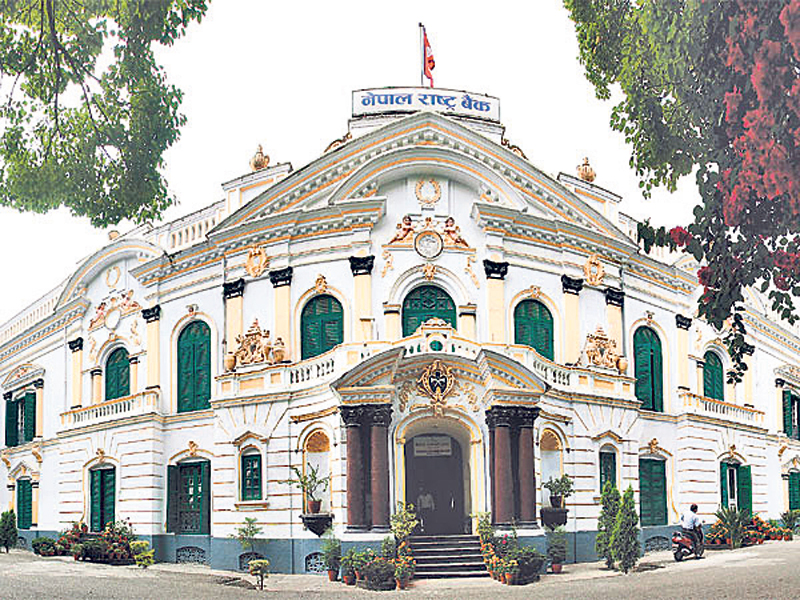KATHMANDU, June 25: The base interest rate of commercial banks has come down to as low as 4.9 percent for the month of mid-June and mid July, due to the banks’ failure to invest their excess loanable funds.
As per the details published by the 20 commercial banks, the average base interest rate of Nepal’s banking system has further come down to 6.2 percent. Two months ago, it stood at a three-year low rate at 6.48 percent.
Two banks--Standard Chartered Bank Nepal and Rastriya Banijya Bank--have maintained their base interest rate at 4.9 percent and 4.97 percent, respectively. The base interest rates of five commercial banks including Everest Bank, Nepal Bank Limited, Nepal Investment Mega Bank, Nabil Bank and Global IME Bank lie between five and six percent. NIC Asia Bank has maintained its base rate at 7.23 percent, the largest of all.
Revised interest rate corridor system introduced

Citing the situation, Nepal Rastra Bank (NRB) has been absorbing the excess liquidity from the banks through its monetary tools. This week, the NRB announced to have mopped Rs 110 billion from the country’s banking system, with the central bank withdrawing Rs 60 billion on Sunday.
A bank’s lending rate is determined by adding a certain premium rate to its base rate. Based on the nature of lending and risk factors, banks add a premium between 1.5 percentage points and 5 percentage points on top of the base rate when they provide loans to their clients.
Since May 2024, banks have been maintaining their average base rate in single digits. Despite a notable decline in the lending rates, banks have been unable to expand their loan portfolio due to the ongoing economic slowdown. In addition, banks are reluctant to issue new loans due to increasing non-performing loans caused by their inability to recover the bad debts.
The records with NRB show that the commercial banks as of Sunday collected deposits of Rs 6.286 trillion, and issued loans worth Rs 4.952 trillion. The credit to deposit (CD) ratio of the banks and financial institutions stands at 78.18 percent, compared to the regulatory threshold of 90 percent. Two months ago, the CD ratio was 79.31 percent.

































